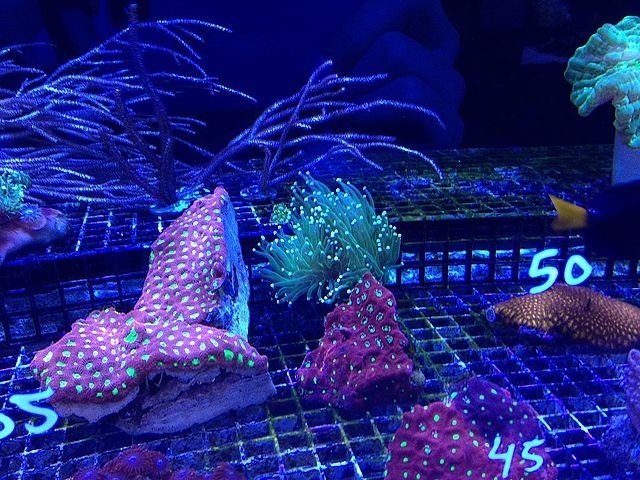USA – When people think of coral reefs, images of beautiful colors and structures come to mind. But beyond aesthetic pleasure, coral reefs provide numerous benefits, ranging from food security and coastline protection to their role in coastal traditions and cultures. Although reefs cover less than 1% of the ocean floor, they support about 25% of marine life and earn their nickname: the rainforests of the sea.
A major challenge to reefs today is whether corals can persist under changing climate. One way that climate affects corals is by stimulating the overgrowth of algae that can smother the reef, making life tough for new corals to survive.
To better understand the balance between coral and algae, scientists at Arizona State University’s Center for Global Discovery and Conservation Science explored the role of herbivorous fish in keeping check on one of the main antagonists in coral-algae fight for reef space, known as “turf algae.” Their findings were published on Aug. 9 in Coral Reefs, the Journal of the International Coral Reef Society.
Led by postdoctoral researcher Shawna Foo, the team utilized 1,476 fish and benthic surveys from 2010 to 2019 across the eight main Hawaiian Islands.
“We found that control of turf algae cover differs by water depth, and herbivore fish numbers were the best indicator of reductions in turf algae cover,” Foo said. “Smaller fish exerted greater control on turf algae than larger fish.”
A mixture of many algal species and usually less than 2 cm (less than 1 inch) in height, turf algae grows quickly and occupies new spaces on the reef. It can also overgrow and kill coral. Herbivores protect coral by grazing on the turf algae, reducing their overall cover, like cattle on a grass pasture.
Prior to this study, the role of herbivorous fish in controlling algae was well known, but there was limited understanding of how this role changed by reef depth and with different types of fish. The new study revealed patterns between different types of herbivore fish — scrapers like parrotfish, browsers like angelfish and grazers like tangs — and their relationship with how much turf algae covered the ocean floor on shallow, mid and deep reefs.
Stay Always Informed
Join our communities to instantly receive the most important news, reports, and analysis from the aquaculture industry.
“Overgrown algae is a critical issue for coral reefs globally,” said Greg Asner, study co-author and director of the center. “This research sheds new light that directly supports the need for conserving herbivore reef fish in a warming climate, for reefs that otherwise will continue to lose to turf algae.”
The fish surveys were conducted by National Oceanic and Atmospheric Administration divers who counted, sized and classified fish at each site. They also estimated what covered the ocean floor, allowing the researchers to distinguish between coral and different types of algal cover. With these surveys, the ASU team investigated factors related to fish and turf algae, including how the composition of herbivorous fish changed at different depths and how fishing intensity changed across depths.
“Our findings also indicate that fishing on deeper parts of Hawaiian reefs may be the most detrimental because deeper reefs are naturally inhabited by fewer fish compared to shallower reefs,” Foo said. “So deeper reefs would be more vulnerable to fishing pressure on herbivores”.
The findings provide new input to reef managers in Hawaii and beyond. Herbivore fish management is a key strategy that can reduce turf algae and boost coral survival. While past management has often focused on the total biomass of herbivore fish present on a reef, the new research indicates that the number of fish — literally the number of mouths on the reef — is the more important goal in the effort to battle turf algae and to protect corals in a warming climate.
Contact
Shawna Andrea Foo
Reference (Open access):
Foo, S.A., Asner, G.P. Depth-dependent indicators of algal turf herbivory throughout the Main Hawaiian Islands. Coral Reefs (2021). https://doi.org/10.1007/s00338-021-02162-2
Source: Arizona State University
Editor at the digital magazine AquaHoy. He holds a degree in Aquaculture Biology from the National University of Santa (UNS) and a Master’s degree in Science and Innovation Management from the Polytechnic University of Valencia, with postgraduate diplomas in Business Innovation and Innovation Management. He possesses extensive experience in the aquaculture and fisheries sector, having led the Fisheries Innovation Unit of the National Program for Innovation in Fisheries and Aquaculture (PNIPA). He has served as a senior consultant in technology watch, an innovation project formulator and advisor, and a lecturer at UNS. He is a member of the Peruvian College of Biologists and was recognized by the World Aquaculture Society (WAS) in 2016 for his contribution to aquaculture.



